Mojave Preserve, Winter and Memories
We sit in Howie, in camp under a leaden sky. Occasional spatters of raindrops announce themselves on the hard fiberglass roof. Our solar panels are nearly in a coma, occasional dribbling out 10% of their rated power. Thus far, in four days, we’ll have fired up the generator twice – – – the same number of times we used it in the entire four months we summer-toured Canada and Alaska.
Here, in wintry high-desert California, even sunny days don’t see a lot of warmth. The jet stream has swung far south, and our week is looking like 40’s in the daytime and 20’s at night. The forecast is calling for snow this coming Thursday. The desert light is gray, flat, and dull, yet we delighted in the vastness, the silence, and the peace surrounding us.
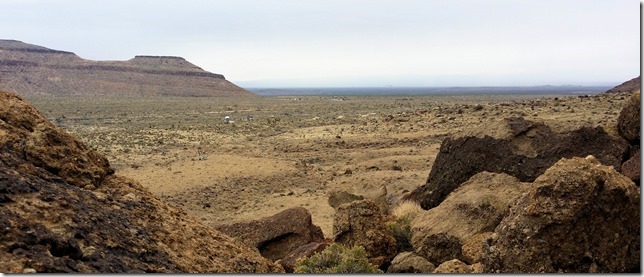
We took a hike up towards Barber Peak, watching how the desiccated ground made the raindrops disappear without a trace. It was a six-mile hike, not too bad but we were not up for it in the day’s cold rain. You can click the image for more detail.
The cool temps made climbing easy, and we worked our way up to one of the many tuff formations (not to be confused with tufa) a mile away from camp. This entire area was created long ago by nearby volcanic explosions and eruptions, and much of the landscape has its origins in rolling clouds of white-hot volcanic ash. In some areas, bits of burned plants and animals can be found as embedments in the eroded boulders and cliffs.
Here is one of the more unique tuff formations, my personal cone-head hat. And another one with a handy arm-hole – – –
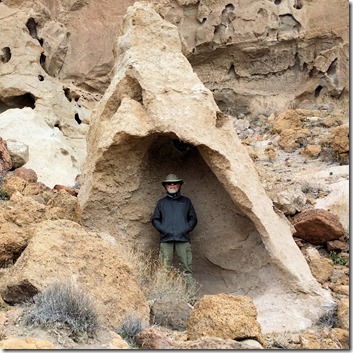
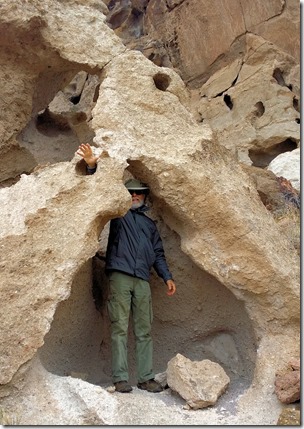
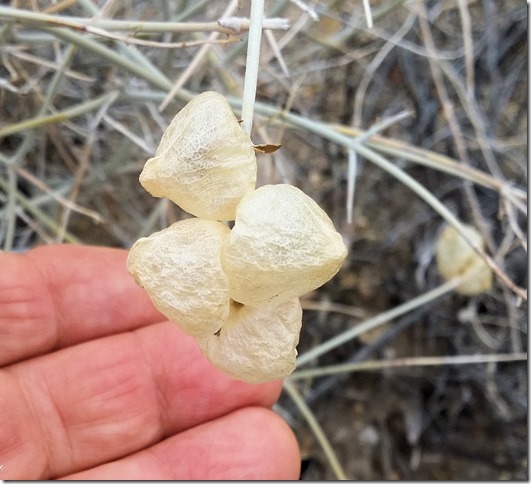
Along the trail, we discovered one of the many charming flora in the region, the “paper bag” plant. It’s named for these puffy, paper-like seed pods that blow away and spread seeds across the desert. This is the kind of thing that makes the desert unique, beautiful, and even inspiring at times.
At any first glance, the desert can be boring, drab, deserving of only a quick drive-by. But when we look a little deeper, there’s a magic and an industry to the hardy denizens, a wonderful display of limitless variations in survival techniques.
Then of course, there’s the land itself, the ridges, valleys, and outcroppings laid bare by sun and wind, seemingly unashamed and even eager to be explored by sight-seekers such as ourselves.
At this moment though, there are not many sights to be seen. The sky has lowered to the ground, and the cliffs 1/4 mile away are almost hidden in the mist. It’s only 43F outside, but the damp wind makes it feel like a butcher’s freezer. Time to crank up the generator, turn up the propane heater, and pause to reflect. Life is good.
Tuesday brings a steady, clattering rain to Howie’s roof. The desert sands have achieved a rare dampness, reminding us of a beach just above the surf line. But unlike the bland smoothness of the wave-pounded beach, the desert shows an infinite character – a medley of grains of rock, pebbles, seeds, plant chaff. Animal tracks, both recent and long-past, take on a sharper edge with the wetness.
The sky has brought its loving moisture right down to the earth so eager to drink it up. We can see scarcely 100 feet through the thick, water-laden air.
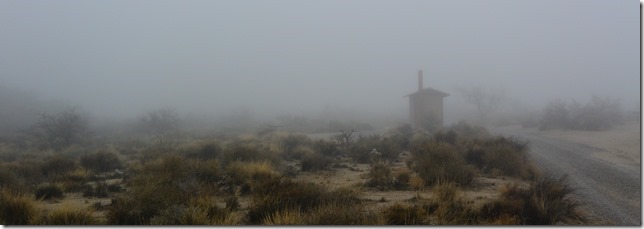
This is such a different way to experience the place, and what an incredible contrast to our previous visits. Here’s a winter evening sunset in February of 2014 – – – same exact campsite.
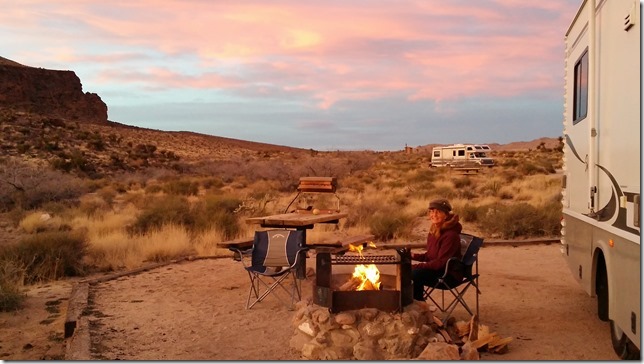
But today, we can just barely see our way to the outhouse across the driveway. Expecting to do any sightseeing is ridiculous with 100-foot visibility, and exploring is subject to very rainy tracks, potential mudholes and even flash-floods (or at least washouts). We find ourselves VERY content to flirt with cabin fever, staying inside Howie most of the day. Writing, listening to music, and reminiscing are just fine with us today. Remember when – – –
– – – we visited the old Morningstar Mine way up in the hills – – –
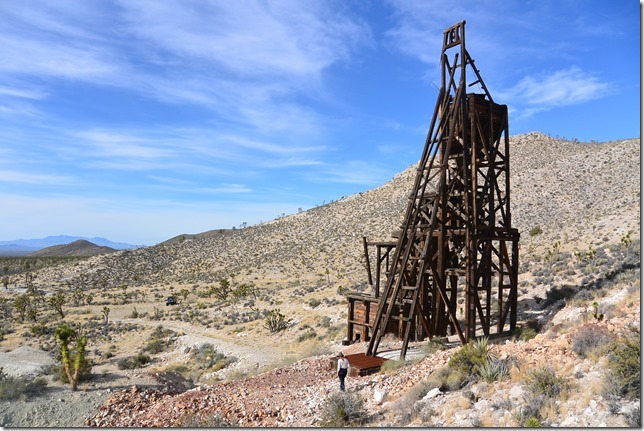
– – – and got Ralph all crossed-up on the Barber Peak trail – – – – then squeezed him through a railroad sand-wash overpass by digging ditches for the tires.
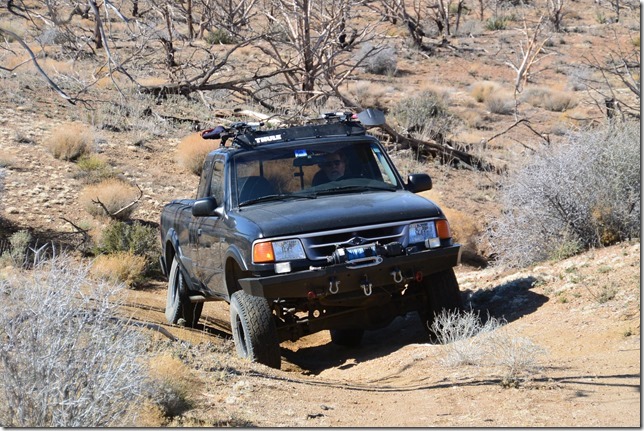
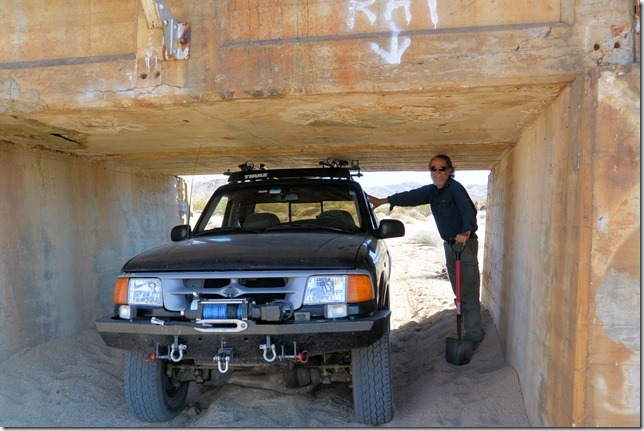
And how about that old cattle watering cistern near Government Holes? That would be fun to visit again, but the road is probably a stream today.
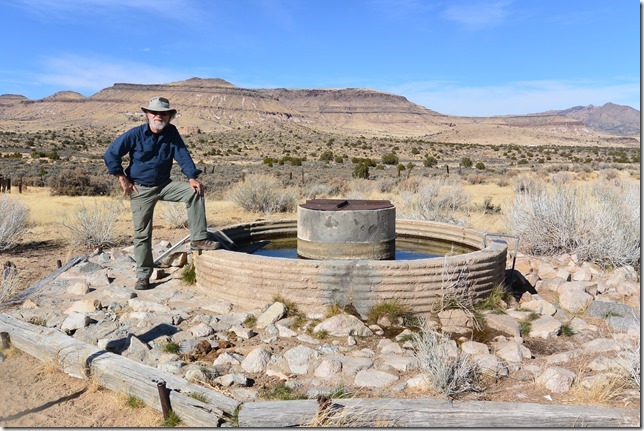
We absolutely LOVED the Mailbox (and it’s little froggie treasures) along the Mojave Road – – –
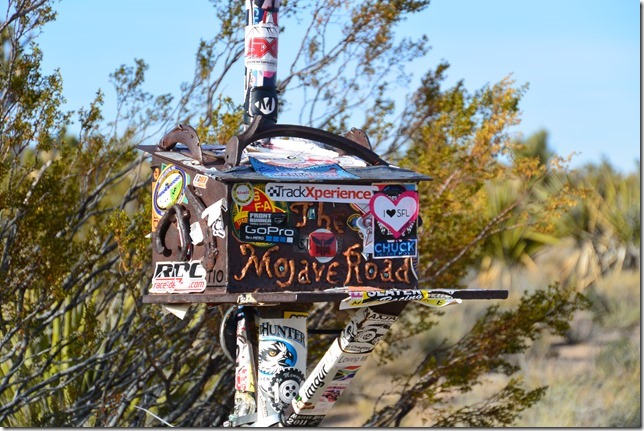
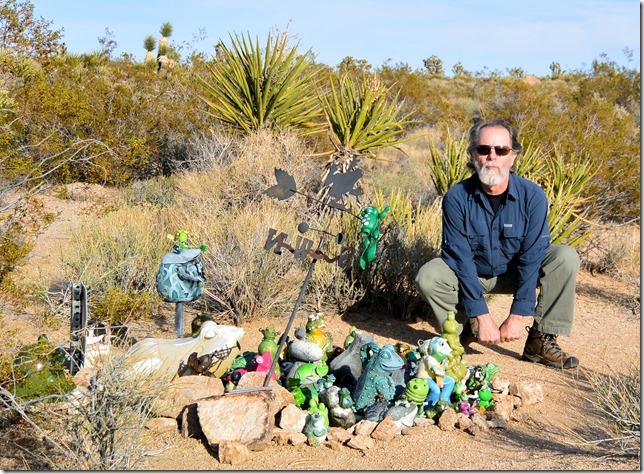
– – – and were delighted with the cavernous Lava Tubes.
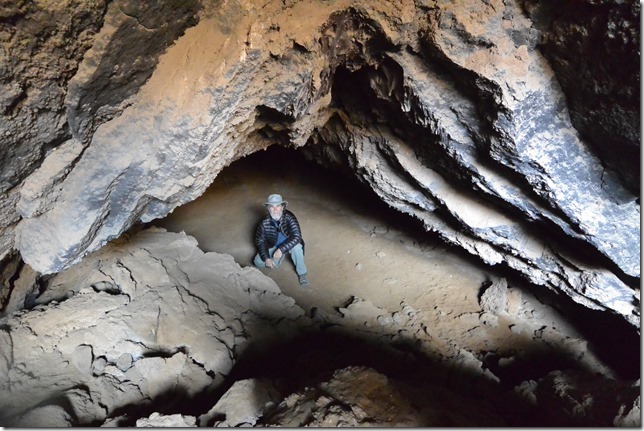
On an even earlier trip, we spent some time watching folks ski down the sand dunes near Kelso.
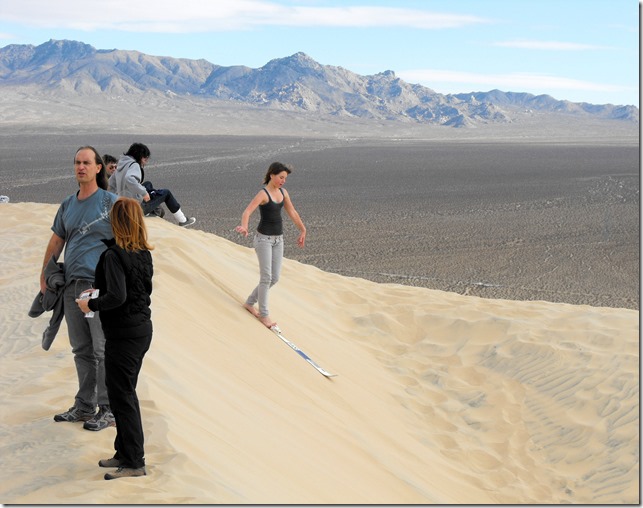
And of course we always have a great time checking out the broad diversity of plants, wildflowers, and cacti.
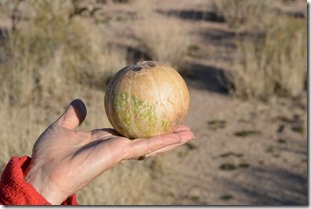
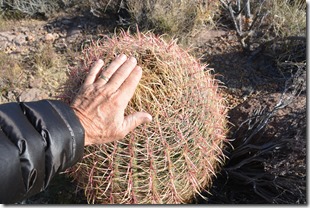
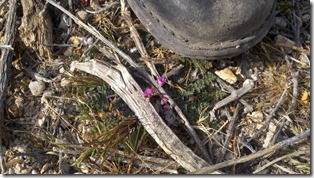
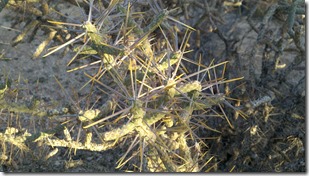
Well, we’re content for now missing out on some of our “old friends”. Plenty of time to catch up after the clouds clear. What’s remarkable is that every single one of these “points of interest” lies inside the boundaries of the Preserve. And that doesn’t even mention the wide-open vastness of the area, 2,500 square miles of untrammeled desert, mountains, and human/natural history. Can you tell that we really like this place?
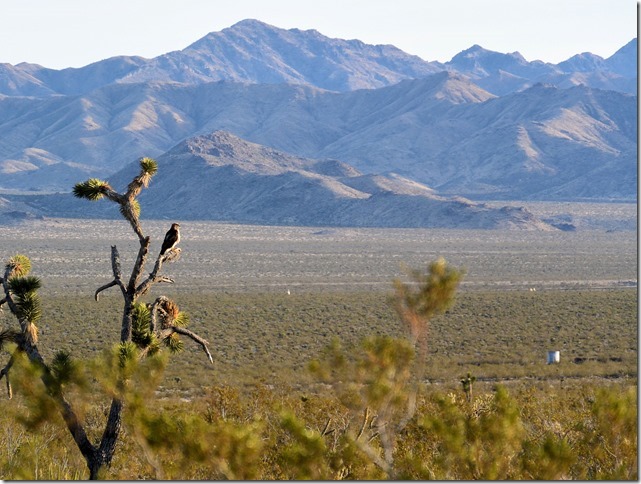
Tuesday night put us to bed with an incessant, pounding rain. Later, around midnight, the trailing edge of the front came through. The turmoiled air behind the front became a blustering gusty windstorm, blasting us nearly off the leveling jacks one moment and deathly quiet the next. Howie was shaking and trembling like a Chihuahua crapping a peach pit.
One of the many times we were awakened by the noise and shaking of the wind, I lifted our bedroom blind and saw diamond stars against pitch-black. After an adventurous night’s pseudo-sleep, the morning dawned to rich golden light across a cloud-speckled sky. I gotta tell you again, we just LOVE the desert.
Same shot as yesterday – we actually have company, one stalwart soul at the other end of camp.
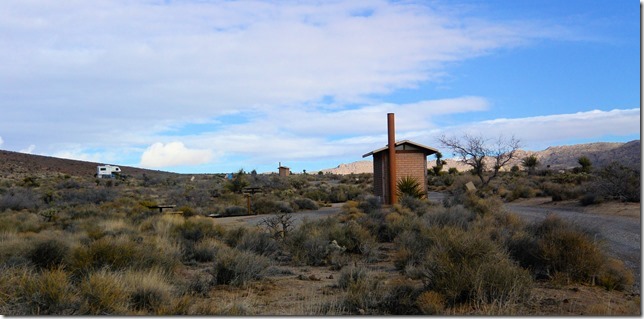
Looking west out of camp, the rocky orange outline around the slot canyon lies in the foreground. Beyond it are the hills and plateau of Wild Horse Mesa. In the far distance, a dusting of snow graces Kelso Peak. The sky is telling us that the forecast afternoon weather is on its scheduled way.
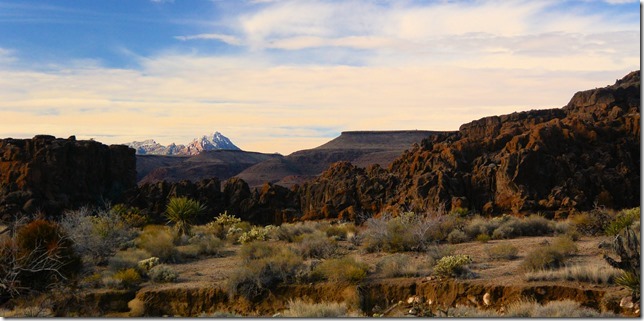
With the next storm system swooping in on us, we decided to take a short hike.
When you just drive by the desert, it has a tendency to look flat and smooth and featureless except for the mountains and ridgelines. But what it really looks like is a weathered tumble of rocks and drainages. Here, we’re less than a mile from camp. You can barely make out the local buildings and the outhouses in the campground. Click/zoom for more detail.
It’s only while hiking (or sometimes driving slowly on a dirt track) that you can get an appreciation of the surrounding subtleties. Here is a bird’s nest, patiently (and oh so carefully) woven by a Cactus Wren. Not many predators come after their eggs. Best not to make too many mistakes while landing…
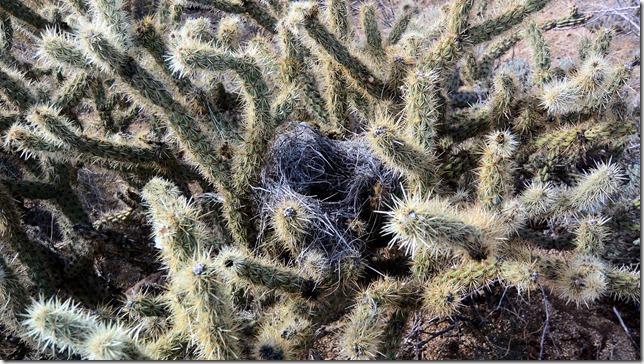
A brush fire torched these yucca (and many others), but their root bases remained intact and are pushing up new plants.
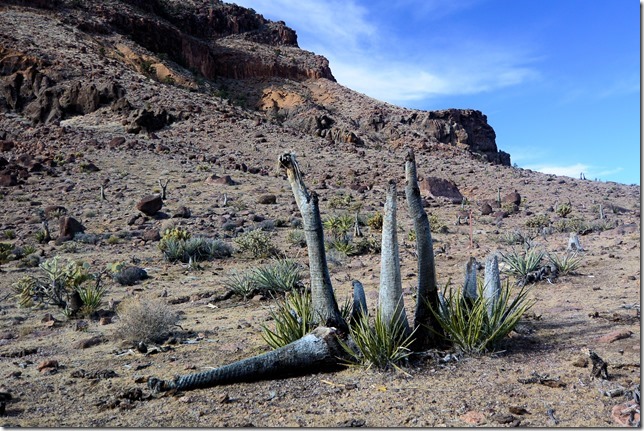
Last night’s rains found some natural depressions to hang around for a while.
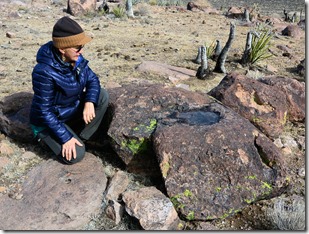
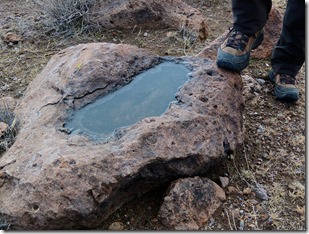
A strand of one of the many cat’s claw shrubs. They’re so tiny and innocuous – until you carelessly brush past them and STOP in your tracks, then tediously un-hook the surgically-sharp hooks from your clothing and skin.
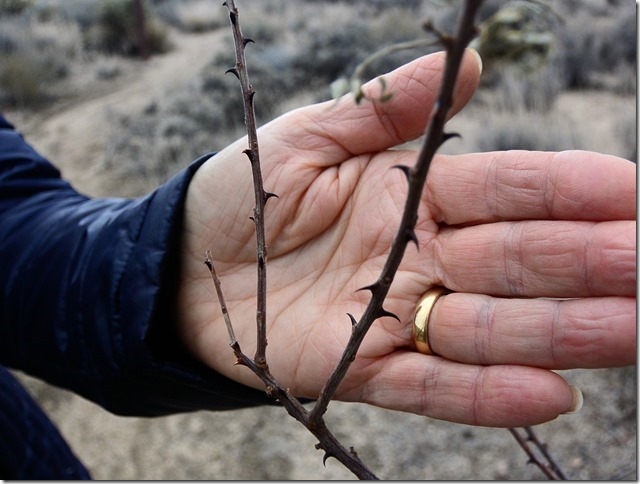
We still had a little time before serious rains arrived, so we took Ralph out for a quick recon of the area, starting with Mid Hills campground about 8 miles north.
Ever seen a coyote gourd/melon? It’s a cucurbita palmata (should you care), and we’ve never seen them green, but here’s a shot from wikpedia/Jeffrey Kane (left). On the right is a pic of a dried-up bunch, and their dead vines, in a sand wash along the Mid Hills trail. Wild melons in the desert. Go figure.
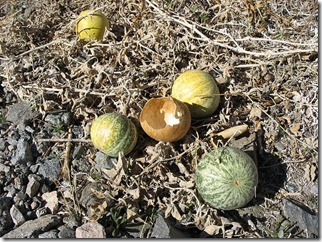
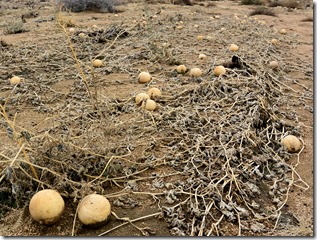
Farther along, down White Horse road going south, we found an interesting wash-out area that had exposed the roots of many plants. This gives an idea of how aggressively the desert flora reaches out for water – the root systems are far bigger than the above-ground part of the plant.
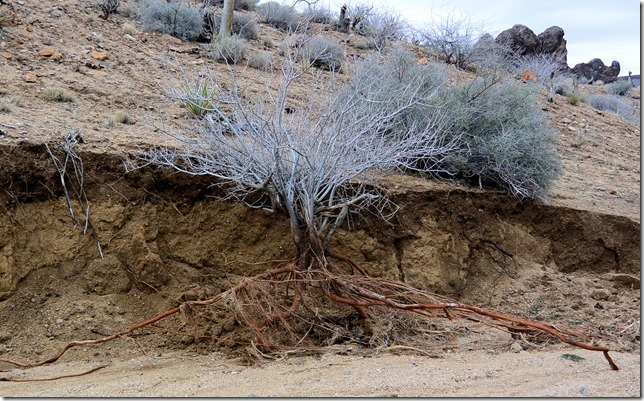
The campground at Mid Hills is actually nicer in many ways than Hole in the Wall. It has a long winding access road, many varied camp sites, lots of double-restrooms and plenty of running water. It’s also higher in elevation, making it better for the hotter months. What it does NOT have is a dump station, nor any vestige of cell service. As far as views go, we couldn’t see anything today, for it was already weathered-in and snowing, but we know from previous visits that there are also some pretty nice views from some of the camp sites. We’ve been here many times (but only in winter) and have yet to see anybody camped. A few patches of snow, 36F, empty solitude at its finest.
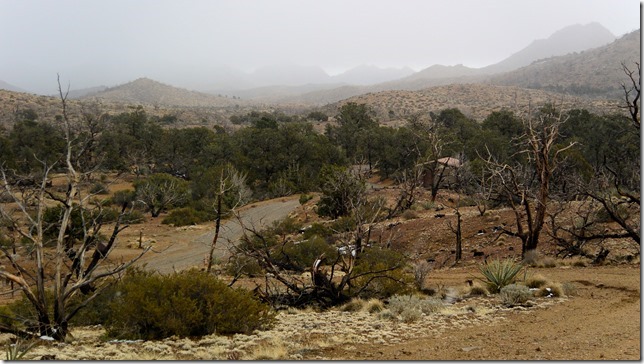
Before 2005, the entire area (high country) was typical pinion-juniper forest. Then a lightning-generated fire took out more than 70,000 acres. It was hot enough to burn off the foliage and kill the plants, but apparently not hot enough to actually set the tree’s wood on fire. The entire landscape is dominated by thousands of these tree skeletons, still braving the wind and sun eleven years later.
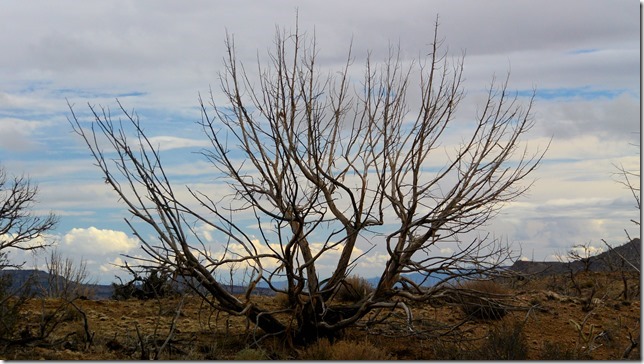
East of Wild Horse Road, the undulating terrain offers varied views of the lava and ash flows that make up the land. The big gray zone is “tuff”, congealed volcanic ash. I think it’s misleading to call it ash, actually. For me, ash is something that comes from a fire, and you put a hankie over your face so you can still breathe. A volcanic ash plume is actually a cloud of rock vapor. You can read that as “boiled rock turned to rock-steam”, at temperatures well over 3000F. When it cools, it first turns to liquid rock and then to solid rock.
So that white stuff was once a boiling cloud of rock vapor, roaring across the landscape at supersonic velocity, wiping out everything in its path.
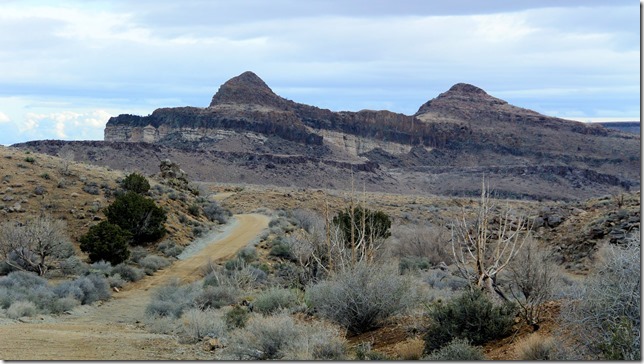
Just before the bottom section of Wild Horse Road, we turn toward the slot canyon at Hole in the Wall. This is the “back side” (west side) of the rock ridge that separates the campground from Wild Horse canyon. The low spot in this picture is where we hiked through the other day, where the steel rings are embedded in the walls.
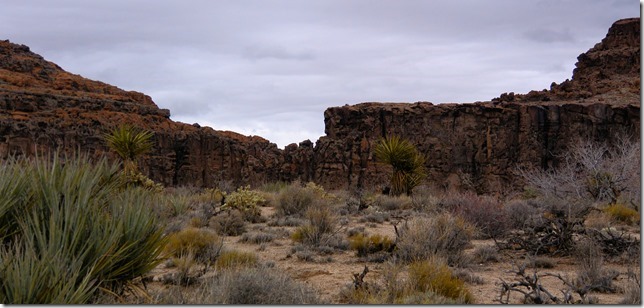
We got back to camp just about right, with the weather roaring in for another bout of serious rain. I’m typing this over the staccato clatter of drops against our roof and windows. We still have propane, battery charge, and water remaining, so we’re snug and smug in Howie. Tomorrow should bring some more sun, and we’re going to head down toward Salton Sea for a look-around.
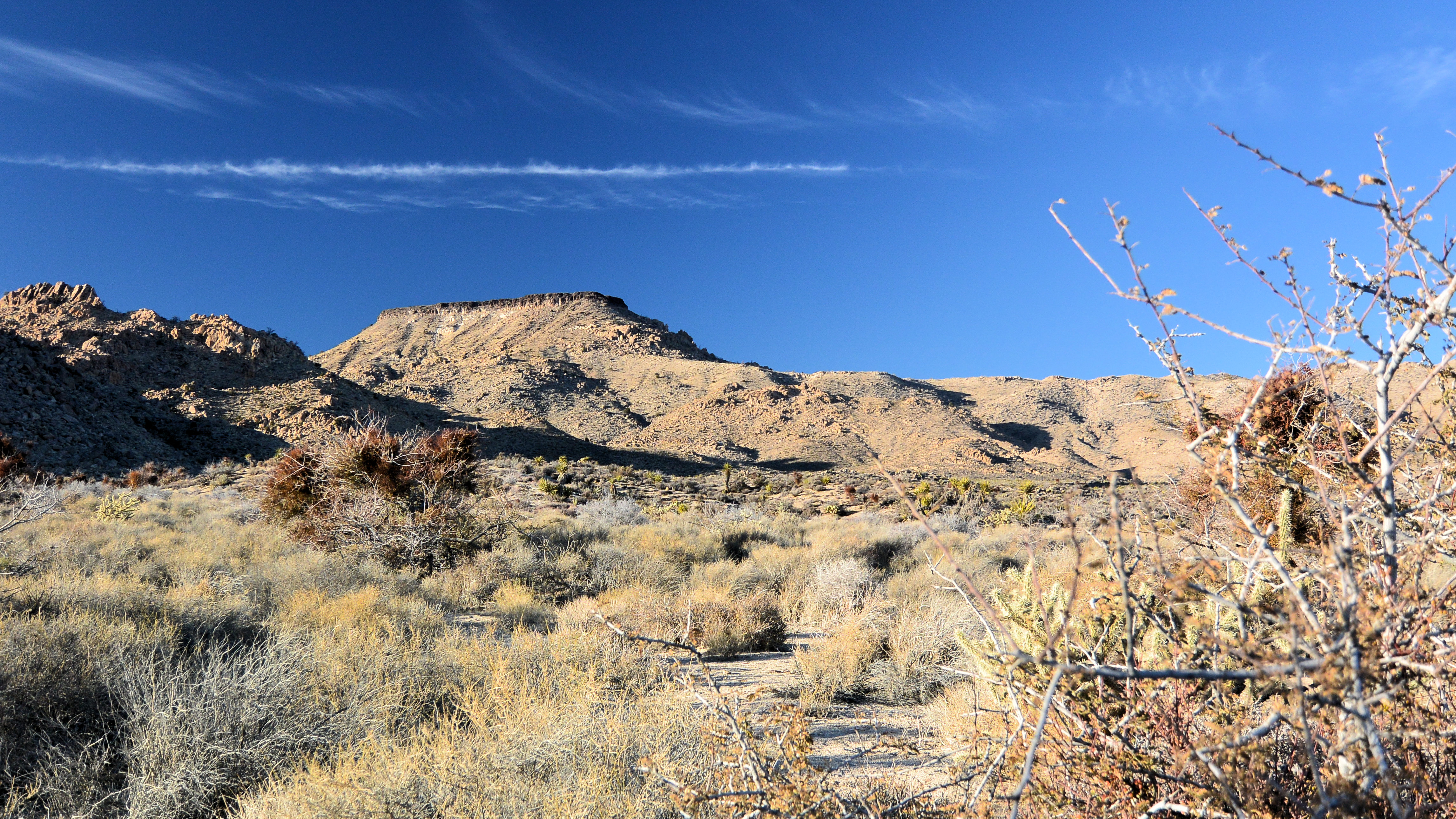
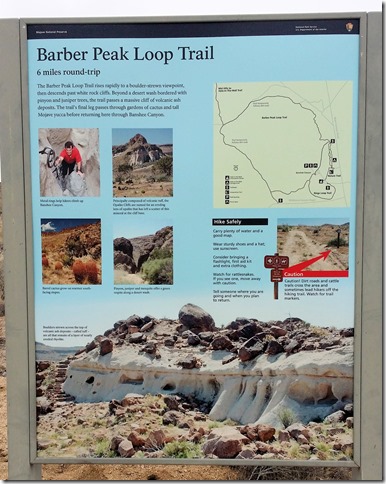

We’re getting pummeled over here on the coast with 2″ in an hour of much needed rain yesterday and another 1/2″ today. Stay safe!
Yeah, I guess we don’t have much to gripe about, maybe a half-inch per day here at most. Snow this morning….
Gonna go drive some desert roads today, we’ll see if the runoff has made any washouts.